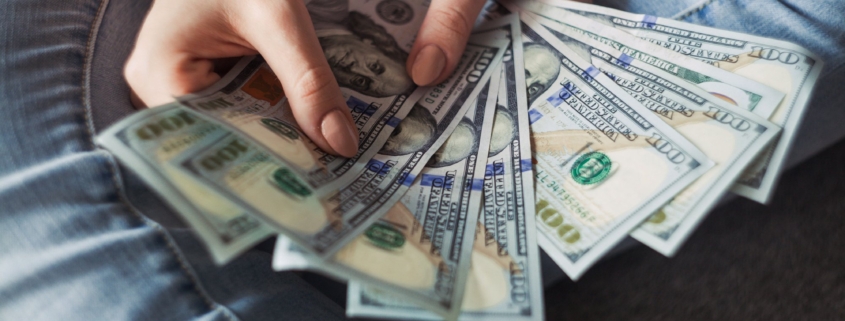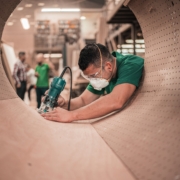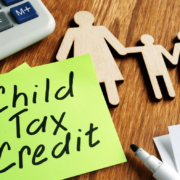Understanding SBA Disaster Loans and What They Mean for You
- Discover how much funding you may get with an SBA disaster loan.
- Find out how to qualify for a disaster relief loan.
- Learn more about what disaster relief loans can be used for.
- Find out if disaster relief loan terms are reasonable.
- Learn about the SBA disaster relief loan application process.
- Find out if your credit history affects your ability to get a loan and what other information is necessary to secure a loan.
- Find out how soon you should apply for an SBA disaster relief loan.
- Discover if your business’ previously existing mortgage can be refinanced through a disaster relief loan and what to do if you have an insurance claim already pending.
- Find out what information is required from stakeholders to secure a disaster relief loan.
- Find out where to start with the application process and why a financial forecast is an important part of the process.
If you’re a small business owner struggling financially due to the COVID-19 outbreak, there is help available. The SBA is offering Economic Injury Disaster Loans of up to $2 million. Fiducial has answers to your frequently asked questions. Visit Fiducial’s Coronavirus Update Center for more information on SBA disaster loans as well as emergency relief services.
Q: How much funding can I get with SBA disaster loans?
Small businesses that need support through the COVID-19 disaster recovery period can borrow as much as $2 million. The Economic Injury Disaster Loan (EIDL) provides an interest rate of under 4%.
Q. How do I know if I qualify for Disaster Assistance?
The best way to determine whether you meet the criteria for a “small” business is through the North American Industry Classification System Codes and the Table of Small Business Size Standards through the SBA. Keep in mind that in order to determine qualification, a business is gauged both on its own without affiliates and when combined with its affiliates. Affiliates is a term that is used broadly when it comes to Disaster Loans. Click here to see the specific regulations. If you have questions about whether or not you meet this criteria, ask your Fiducial representative for assistance.
To qualify, the business, both with and without affiliates, is not allowed to go above the established standard for its industry. The rule on whether to use the numbers for the business alone or with affiliation is based on whichever of the two is higher.
To get an idea of what would be considered small for different industries, the standard for the manufacturing industry dictates that for a business to be considered small it can’t employ more than 500 people. For a sit-down restaurant to qualify as small, it cannot average more than $8 million in revenues per year; and for retailers, the average annual sales can’t be over $7 million.
Q. Is there a maximum amount of assistance that I can get with SBA disaster loans?
Yes. No more than $2 million is available under the program currently being used.
Q. Are there limits to what the SBA disaster loans can be used for?
The purpose of the loan is to help businesses survive through the disaster recovery period and to mitigate the economic damages that it suffers. The loans are explicitly only to be used for that purpose until things get back to normal. This means that businesses that have suffered financial injury can apply for an EIDL to cover their losses and to provide what they need to continue business operations to replace what they would have needed under circumstances prior to the crisis. The amount cannot exceed that threshold, and will be calculated based on three criteria:
- What your total debt is,
- What your operating expenses are for the disaster recovery period and what will provide working capital during that time that puts you in a reasonable position,
- What your working capital position and manageable expenses would have been had there been no disaster.
When making the determination, the SBA will not necessarily determine that the amount of financial injury you demonstrate will be the same amount that you are eligible to borrow. Each decision will be based on the data and backup you provide as well as what they view as the reasonableness of your ask.
Additionally, SBA disaster loans cannot be used to make improvements or grow the business beyond making repairs to damage caused by the disaster. The only exception is if there are local building codes that demand changes that result in expansion.
Q. Are the terms of the SBA disaster loans reasonable?
Terms will be dependent upon the availability of alternative sources of credit, and how much time it is likely for the business to need to repay the loan, but they can have interest rates of 4% or less and maturity of up to thirty years.

Understanding the Application Process for SBA Disaster Loans
Q. Does my credit affect my ability to get a loan?
Your credit history will definitely be taken into consideration by the SBA. Additionally, you will need to demonstrate your ability to repay the SBA disaster loans when they come due. You will probably be required to pledge collateral such as real estate to secure the loan, though lack of collateral will not preclude approval. For loans of $25,000 or more, whether for a physical business loan or an EIDL loan, collateral will be particularly important.
The SBA is required under the EIDL system to review the financial statement for the business, as well as for stakeholders including each officer, each partner and director, and each stockholder whose ownership stake is twenty percent or greater. Personal repayment will need to be guaranteed by the business’ principals. Those individuals may also be required to pledge additional collateral in order for the loan to be secured, though this requirement may be waived for loans relating to the COVID-19 crisis.
Q. What other information is required beyond credit history?
Your application must include a signed and dated IRS Form 4506-T, which will serve as notice to the IRS that your tax return information can be released to the SBA so that they can consider your loan. The application also requires current information on your finances, including:
- Most recent federal income tax returns
- Personal financial statement
- Schedule of liabilities listing all fixed debts
- Completed set of all SBA paperwork
- Year-end profit-and-loss statement and balance sheet for that tax year
- A current year-to-date profit-and-loss statement
- Monthly sales figures for increases in the amount of economic injury
Q. When should I apply for an SBA disaster loan?
The timing of your loan application is entirely up to you and your perception of need. The entire decision-making process for SBA disaster loans generally takes two to three weeks assuming that all of the information has been provided in the application. Please note that though a decision may be made in less than a month, a congressional study revealed that actually getting the EIDL loan has historically taken 43.3 days.
Q. What about my business’ previously existing mortgage?
Can it be refinanced through the SBA program? Absolutely. Either all or a portion of previously existing business mortgages can be refinanced if no other credit for doing so is available. The SBA will also step in where uninsured damage involving 40 percent or more of the property has occurred, as long as the refinance plan includes repairs. For more information on this aspect of the program, speak with an SBA disaster loan officer.
Q. I have an insurance claim pending. Should I wait for it to settle before filing a loan application?
No. You should not allow anything to delay your application, especially because there is a filing deadline. When your settlement is finalized you can add it to your application. Keep in mind that if you apply and are approved for a loan for total replacement, you are required to apply the funds that you receive from your insurer directly to repayment of the loan.
Q. Does the SBA require personal financial statements from stakeholders to process the disaster loan?
To secure SBA disaster loans, stakeholders — including the business’ partners, officers, directors and any stockholders with 20 percent or more ownership — will need to personally guarantee repayment of the loan, in some cases will even be required to pledge additional collateral for security. They will also have to provide financial statements.
Where Do I Start?
Contact Fiducial
There will be a huge backlog of applications. So, sending in an incomplete package will slow down the approval process. Fiducial experts will review what program is right for your business and help plan for the cash flow disruption so you can thrive once the economy takes off again. We can get through this together – all you have to do is notify us you’re considering an EIDL.
Put together a forecast
One of the first things that you will need is a budget and financial forecast that looks forward for at least half of the year – going beyond six months would be even better. Having this forecast in hand will provide invaluable information upon which the SBA will base its decision about the impact that the disaster will have on your business, and on your worthiness for a loan. Even if the SBA turns you down, the information will support your case when you seek funding from other creditors.
Start familiarizing yourself with the forms you’ll need to fill out and the documents you’ll need to assemble
In order to prove your need for a disaster relief loan, you’ll need a significant number of supporting documents. You’ll also be required to take a deep dive into the financial impact that the disaster will have on you. This is not a situation for estimates. The SBA will want to see your work.
Check your work at least twice
When you’re completing the forms, go over it several times to make sure you haven’t skipped over anything. Any application packet that is incomplete is a packet that is not going to be approved anytime soon. Your Fiducial representative can make sure your application is in order.
Take the urgency of the situation seriously
You may think you’re okay in the moment, but things are going to get worse soon. Don’t delay – complete the application for the assistance loan ASAP.
Be gentle with the SBA staff
You’re stressed and so are they. You can make their job easier by getting your paperwork in early and making sure you haven’t skipped anything. Even if you have done everything perfectly, they are still going to be frazzled and overloaded with work. Be patient.
For more small business COVID-19 resources, visit Fiducial’s Coronavirus Update Center to find information on SBA loans, tax updates, the Paycheck Protection Program, paid sick and family leave, and more. If you keep in mind that everybody is struggling with the same issues and concerns, you will put yourself in a better emotional place. Need assistance with this process or to discuss your options? Call Fiducial at 1-866-FIDUCIAL or make an appointment at one of our office locations. Ready to book an appointment now? Click here. Know someone who might need our services? We love referrals!









